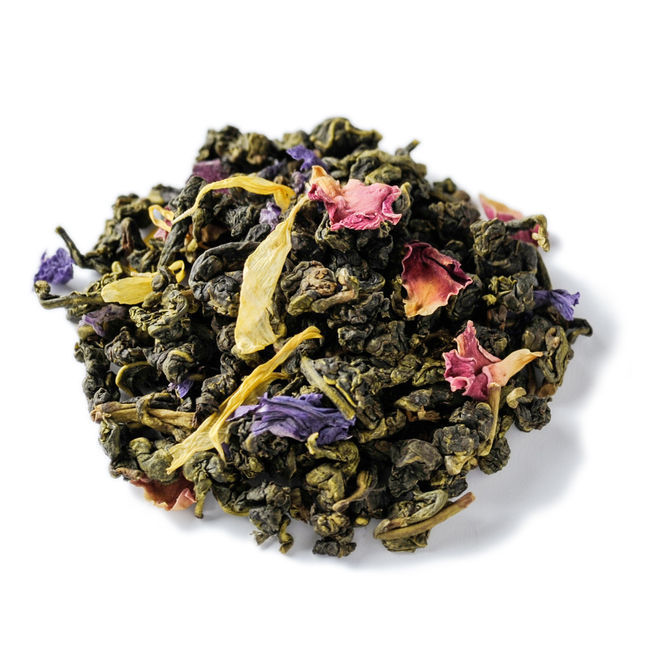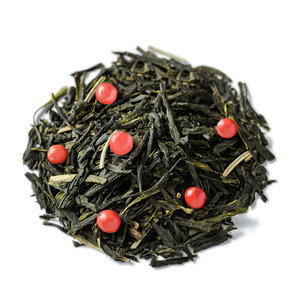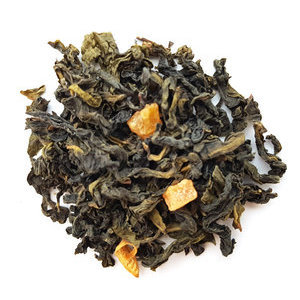LEARN MORE ABOUT OOLONG TEA AND ITS BENEFITS
A tea with a unique flavor
Oolong tea is a clear and limpid liqueur tea. Very soft on the palate, it will be an ideal partner both for your tea breaks and to accompany your meals. Oolong tea (or Wulong which means "black dragon" in Chinese) is also called "blue-green" tea. It first appeared in the 16th century, but the current manufacturing method emerged in the mid-19th century and then offered a relatively new type of tea. The greatest characteristic of an oolong is the richness of its aromatic palette. This tea is produced from the same leaves as for a green tea or a black tea, from the variety of tea tree "Camellia Sinensis". For green teas, the leaves are immediately heated with steam, giving them a fragrance and a very green liquor, even iodine. They are said to be non-oxidized teas. Black tea, on the other hand, is produced by letting the leaves oxidize, releasing fuller and deeper flavors. It is said to be an oxidized tea. In between is oolong tea, the freshly harvested leaves of which are put in bamboo baskets and brewed. The duration of this operation will determine their oxidation rate (from 10% to 70%) and give them that characteristic scent. We will then speak of semi-oxidized tea.
The meal companion
In China and Taiwan, where oolong teas are produced, it is essential to replace water with tea. The ingredients in tea help eliminate fat absorbed during meals and help prevent obesity. The lower end oolongs are sometimes used in fingerwash bowls because the polyphenol in tea is very effective at removing grease. Oolong tea (Wulong or "blue-green" tea) is a tea with incomplete oxidation. It therefore sits between green tea and black tea and is very popular in Asia. The oxidation of the tea leaves giving rise to Oolong tea ranges from 10% to over 70%. For this reason, oolong teas cover a very wide aromatic palette.
They can be classified into 3 main categories:
> Weakly oxidized oolong (from 10% to 30%), which have aromas close to green tea, but more floral and soft on the palate.
> Strongly oxidized oolongs (40% to 70%), which develop more woody and fruity notes.
> "Aged" oolong, which is left to mature for several years, taking care to heat the leaves at regular intervals to reduce their humidity. This type of Oolong tea remains very marginal.
Oolong teas are mainly produced in Taiwan (nearly 93% of national production) and in China (Fujian province, in particular the Yuyi mountains). Their manufacturing process dates back several centuries. The Gong Fu Cha method, performed in mini teapots with numerous repeated infusions, is recommended for the preparation of Oolong teas. Oolong literally means "black dragon". This name originates from an ancient Chinese legend and is said to refer to the black snakes that were sometimes found coiled around the branches of tea plants.
How to prepare oolong tea?
The most important point when brewing oolong tea is undoubtedly the temperature of the water. Very hot water brings out the aromas as much as possible, so it is recommended to use boiling water (95 ° C) so that the leaves fully release their scents. In order to obtain a very fine and subtle tea on the palate, use a quantity of leaves a little higher than the average and a very short infusion time will be preferred. This process, beyond the quality of the fragrance released, will allow the tea to be infused 2 to 5 times for plain teas and 2 times for a scented tea. The most important aspect is the temperature of the water, which must be boiling (95 ° C) and will allow the fragrance contained in the leaves to be released. There are specific accessories for tasting oolong tea, but it can also be prepared with classic utensils.
1. Add 3g of tea to a small teapot or gaiwan type cup with lid, add hot water and let steep for 45s to 1min. Pour well until the last drop in your cup.
2. For the 2nd brew, the leaves have already partially opened, decrease the brewing time by 10 seconds.
3. From the 3rd infusion, add 10 seconds more than the time initially indicated.
Ajoutez la quantité de feuilles nécessaire selon la taille de votre théière, ajoutez de l’eau très chaude et laisser infuser entre 3 à 5min. Vous pouvez aussi laissez infuser plus longtemps, le rooibos étant peu tanique il développera peu d’astringence. Il est souvent consommé avec du lait.
Iced oolong tea
Oolong tea will also be delicious in iced tea, the best technique being to steep the leaves in cold water. Cold brewed tea will then contain virtually no theine.
1. In a carafe, ideally the LUPICIA Handy Cooler 1L, add 8 to 10g of tea and 1 liter of cold filtered or slightly mineralized water.
2. Put your carafe in the refrigerator and let it steep overnight.
3. Remove the leaves and you will have a smooth, creamy tea without astringency. You can also steep your tea more strongly, with fewer leaves, in hot water.
After infusion, remove the leaves and add a large quantity of ice cubes, you will obtain a more pronounced iced tea.












